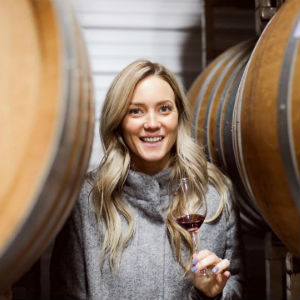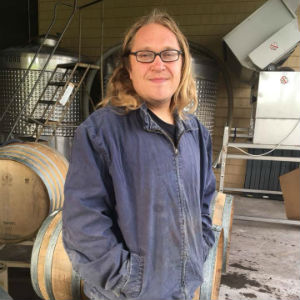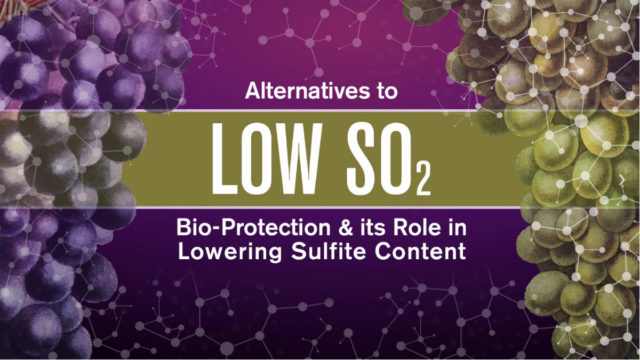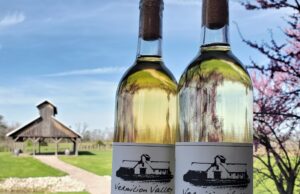By: Paul Vigna

Arthur O’Connor’s familiarity with sulfites includes more than his use of them while working for wineries in Argentina, Australia, Spain and the United States.
Early in the 1990s, he worked briefly on a project that dealt with no-sulfur wine, and later he experimented with a no-sulfur Chardonnay – which never did bear fruit – while working with Randall Grahm at Bonny Doon Vineyards in Santa Cruz.
Still, it is a subject that has kept his interest through the years, making him ideal to moderate a panel discussion entitled “Alternatives to SO2 in Winemaking; Bio-Protection & its Role in Lowering Sulfite Content” at the North Coast Wine Industry Expo on Dec. 5. It includes a trial tasting.
His goal for this session, he said, is to just go back “and look at a bit of history as to how we got here in regards to Sulfur Dioxide usage” at a time when he’s observing more use of it, largely as an anti-microbial agent. “Winemakers also use it”, O’Connor said, “as an oxygen scavenger and as an enzyme inhibitor.”
For sure, it’s a topic that draws a number of perspectives, often referenced as controversial in some of the numerous articles on the topic that exist– on the internet.
On one hand, you have winemakers such as Kerith Overstreet, of Brulium Wines, a boutique producer of vineyard designated wines in Sonoma County, who has embraced a lower-sulfur style. “Sulfur remains our workhorse as an antimicrobial, antioxidant, and antioxidase. I use sulfur judiciously in all of my wines, red/white/rose. But every winemaker should have multiple tools in their toolbox.”

Across the country, Lisa Hinton is following a similar path to create what she calls “authentic and raw wines,” largely eschewing sulfur for the variety of products she makes at Old Westminster Winery, located about 35 miles northwest of Baltimore. She used to use small amounts of sulfur, she said, but that has changed. “We believe that sulfur isn’t necessary in all – even most – scenarios. Some of the key contributing factors that allow us to not use sulfur include healthy fruit with a reasonable pH, the use of pied de cuve, careful elimination of oxygen and meticulous post-fermentation cellar care. To my mind, this should be enough to preserve the integrity of wine without the addition of sulfur.”
O’Connor is the president and winemaker at Disuption Wine Co., an eastern Washington state producer, where he teams with Andrew Latta to make the wine. His work has included 10 years as director of winemaking for Group Codorniu, based in Barcelona, with responsibility for all winemaking at the oldest wine company in Spain; as president of Artesa winery and as a co-founder of Locations Wine, with Dave Philly, in Napa.
All that experience, he said, doesn’t mean that he spends this session dictating protocols regarding the use of sulfur. Rather, he just wants to challenge people’s thinking on it, particularly citing examples he has learned of mitigating Brettanomyces and hoping those lessons will help others relax about their sulfur usage.

Chris Nelson’s winemaking career has taken him from almost a decade in downtown San Francisco – where he co-founded Bluxome Street Winery in 2010 and then, two years later, Dogpatch WineWorks – to rural Raffaldini Vineyards & Winery in the mountains of western North Carolina. It specializes in Italian grapes, from Vermentino to Sagrantino to Montepulciano, and has adopted appassimento to dry the grapes for several of its bigger reds.
Using sulfur, he said, is largely unavoidable there. “It’s more difficult to reduce sulfur usage in more challenging growing conditions, and across my career to date nowhere is this more true than in North Carolina, where humidity reigns supreme and thus massively increases disease pressure when compared to California and other drier climates,” he said. “Sulfur is one of the major tools against a majority of the molds that come in from the field on the fruit prior to fermentation.”
Every tank of white or red grapes gets 30-50ppm SO2, he said, adding that by making this addition in the juice phase, the sulfur is consumed during fermentation and gone ahead of the final product.

A little more than 600 miles to the north, in the heart of the Fingers Lakes, winemaker August Deimel at Keuka Spring Vineyards takes a more contrarian view, emphasizing the “why?” over the “why not?” Are consumers willing to accept the minor flaws in wine that crop up without SO2, he asked. “I mean, on some levels, if the consumer is willing to trade squeaky clean wines for lower SO2 use, if they’re basically willing to say, yea, you know what, we don’t need our wines to be squeaky, squeaky clean, maybe a little less fruity, maybe a little less this that and the other, in order to get less SO2 in our wine, that’s fine. But consumers have not really shown that willingness.”
In the end, he said, this isn’t a bottom-up push from consumers but rather a top-down initiative from specific groups and movements.
As for O’Connor and his panelists, they’ll try to occupy the middle ground, dispensing advice and generating conversation on a multi-layered topic that has wide-ranging interest.
“I don’t expect to answer it all,” O’Connor said. “My hope is to challenge people’s thinking about sulfur and get them to [say], ‘hey, maybe I need to go back and look at my sulfur usage.”
To learn more or register for this interactive trial-tasting session, visit wineindustryexpo.com
















